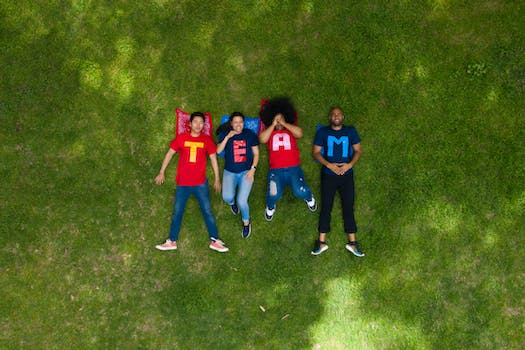Team building is an essential aspect of fostering collaboration and cohesion within remote teams. As remote work becomes increasingly prevalent, the significance of team building activities cannot be overlooked. Building strong relationships and promoting effective communication among team members is crucial in order to achieve common goals and maintain productivity. This article explores the importance of team building for remote teams, highlighting the benefits it offers in terms of increased trust, enhanced collaboration, and improved overall team performance.
- 1. Introduction
- 1.1. Definition of team building
- 1.2. Benefits of team building for remote teams
- 1.3. Importance of team building in remote work
- 2. Challenges of Team Building in Remote Teams
- 2.1. Lack of face-to-face interaction
- 2.2. Time zone differences
- 2.3. Communication barriers
- 2.4. Building trust and rapport
- 2.5. Maintaining team cohesion
- 3. Effective Strategies for Team Building in Remote Teams
1. Introduction
As the world becomes more interconnected and technology advances, remote work has become increasingly popular. Many companies now have teams spread across different locations, working together virtually. While remote work offers numerous benefits, it also presents unique challenges, such as lack of face-to-face interaction and potential communication gaps. This is where team building for remote teams becomes crucial. Team building exercises and activities help foster trust, collaboration, and a sense of belonging among remote team members. In this article, we will explore the importance of team building for remote teams and discuss various strategies that can be implemented to strengthen team dynamics and improve overall productivity.
1.1. Definition of team building
Team building is the process of bringing together a group of individuals to enhance their ability to work collaboratively towards a common goal. It involves various activities and exercises aimed at improving communication, trust, motivation, and cooperation among team members. Team building is crucial for remote teams as it helps foster a sense of unity and connection, despite physical distance. It enables remote team members to develop strong relationships, understand each other’s strengths and weaknesses, and effectively work together to achieve desired outcomes.
1.2. Benefits of team building for remote teams
Team building is a crucial aspect for remote teams to thrive and succeed. As more and more companies are embracing remote work, it becomes essential to prioritize team building activities to foster a sense of camaraderie and collaboration among team members who may be physically distant from each other. This article will explore the various benefits of team building for remote teams and highlight its significance in promoting effective communication, boosting morale, and increasing productivity.
1.3. Importance of team building in remote work
Team building is an essential aspect of remote work as it helps to foster a sense of unity and collaboration among team members who may be geographically dispersed. In a remote work setup, team members often work independently, which can lead to feelings of isolation and lack of connection. However, through team building activities, remote teams can strengthen their bond, improve communication, and enhance productivity. This article will explore the importance of team building in remote work and provide valuable insights on how to effectively build and maintain a strong remote team.
2. Challenges of Team Building in Remote Teams
Remote teams have become increasingly common in today’s digital age, allowing businesses to tap into a global talent pool and operate on a 24/7 basis. However, while there are numerous benefits to remote teams, there are also unique challenges that organizations face when it comes to team building.
One of the main challenges of team building in remote teams is the lack of face-to-face interaction. Unlike traditional teams that work in the same physical space, remote teams rely heavily on virtual communication tools. This lack of physical presence can make it difficult for team members to establish personal connections and build trust, which are essential for effective collaboration.
Another challenge is the potential for miscommunication and misunderstanding. Without the ability to read body language or hear tone of voice, remote team members must rely solely on written communication. This can lead to confusion and misinterpretation of messages, resulting in delays and inefficiencies.
Additionally, remote teams often face the obstacle of different time zones. Team members may be spread across the globe, working in different time zones, which can make scheduling and coordination a complex task. This can impact team dynamics and hinder effective teamwork and collaboration.
Finally, remote teams may struggle with a sense of isolation and lack of team cohesion. Without regular face-to-face interactions, team members may feel disconnected from their colleagues and the organization as a whole. This can affect motivation, engagement, and overall team performance.
In conclusion, while team building is crucial for any organization, it poses unique challenges in remote teams. Overcoming these challenges requires proactive measures such as fostering virtual connections, promoting clear and effective communication, accommodating different time zones, and creating a sense of belonging within the team.
2.1. Lack of face-to-face interaction
One of the major challenges of team building in remote teams is the lack of face-to-face interaction. Unlike traditional office settings where team members can easily meet and communicate in person, remote teams rely heavily on digital communication tools and technology.
The absence of face-to-face interaction can hinder effective team building in several ways. Firstly, non-verbal cues and body language, which play a significant role in understanding and interpreting communication, are often lost in remote teams. This can lead to misunderstandings or misinterpretations of messages, potentially causing conflicts or delays in decision-making.
Secondly, building trust and rapport among team members becomes more difficult in a remote setting. Face-to-face interactions allow individuals to develop a deeper sense of trust, as they can observe and gauge each other’s reactions and emotions. In remote teams, it takes more effort and time to establish trust, as team members rely solely on virtual interactions.
Additionally, the lack of face-to-face interaction makes it challenging to foster a sense of camaraderie and team spirit. In traditional office settings, employees often engage in informal conversations, team outings, or social activities, which contribute to building a strong team culture. Remote teams, on the other hand, need to find alternative ways to create a sense of unity and belonging.
Overall, the absence of face-to-face interaction poses a significant challenge in team building for remote teams. However, with careful planning, effective use of communication tools, and fostering a supportive virtual environment, these challenges can be overcome, and remote teams can still achieve successful team building.
2.2. Time zone differences
One of the main challenges of team building in remote teams is dealing with time zone differences. When team members are located in different parts of the world, coordinating schedules and finding overlapping working hours can be a major hurdle. The time zone differences can make it difficult for team members to have real-time communication and collaboration, as they may be working at different times. This can lead to delays in decision-making, slower response times, and a lack of synchronicity within the team. Additionally, it can be challenging to schedule meetings or video conferences that accommodate everyone’s availability. Team building activities that require all members to be present can also be hindered by time zone differences. However, with proper planning and the use of tools and technologies that facilitate remote collaboration, these challenges can be overcome. It is important for remote teams to establish clear communication channels, set expectations regarding response times, and find creative ways to foster team cohesion despite the geographical and time differences.
2.3. Communication barriers
Communication barriers can pose significant challenges in team building for remote teams. As team members are physically separated and often working in different time zones, effective communication becomes crucial for collaboration and achieving common goals. Several communication barriers commonly faced by remote teams include:
1. Language and cultural differences: Remote teams often consist of members from diverse backgrounds, which can lead to language barriers and miscommunication. Differences in cultural norms and communication styles may also affect the team dynamics.
2. Lack of non-verbal cues: In traditional face-to-face interactions, non-verbal cues such as facial expressions and body language play a vital role in conveying messages. However, in remote teams, these cues are often lost or misinterpreted, making it challenging to understand the intended meaning behind the words.
3. Time zone differences: Remote teams may operate across different time zones, making real-time communication difficult. Scheduling meetings and coordinating work becomes a challenge when team members are not available simultaneously.
4. Technological barriers: Dependence on technology for communication can lead to technical glitches, connectivity issues, or limitations of certain tools. These barriers can disrupt communication and hinder effective collaboration.
5. Lack of personal connection: Building trust and rapport among team members is essential for effective team building. However, in remote teams, the absence of regular face-to-face interactions can make it harder to establish personal connections and foster a sense of camaraderie.
Overcoming these communication barriers requires proactive measures such as clear and concise communication, promoting cultural understanding, utilizing communication tools effectively, establishing regular check-ins, and fostering a supportive team culture.
2.4. Building trust and rapport
Building trust and rapport are essential aspects of team building, particularly in remote teams. While team building is already challenging in traditional office settings, remote teams face additional obstacles that can hinder the development of trust and rapport.
One of the main challenges in remote team building is the lack of face-to-face interaction. Without physical proximity, team members may find it harder to establish personal connections and build trust. Non-verbal cues, such as body language and facial expressions, play a significant role in building rapport, and their absence in remote settings can make it difficult to establish a sense of connection.
Communication barriers also pose a challenge in remote team building. Different time zones, language barriers, and technological issues can all contribute to misunderstandings and hinder effective communication. When team members are unable to communicate clearly and efficiently, trust can erode, leading to conflicts and decreased productivity.
Another challenge is the limited opportunity for informal interactions. In traditional office settings, team members often engage in casual conversations during lunch breaks or coffee breaks, fostering a sense of camaraderie. Remote teams may lack these informal interactions, which can make it harder to build relationships and trust among team members.
To overcome these challenges, remote teams can employ various strategies. Regular video conferences can help bridge the gap created by the lack of face-to-face interaction, allowing team members to see each other and communicate more effectively. Team building activities, such as virtual icebreakers or online games, can also facilitate bonding and trust-building among remote team members.
Clear and transparent communication channels are vital for remote teams. Establishing guidelines for communication, leveraging technology tools for real-time collaboration, and encouraging open and honest discussions can help minimize misunderstandings and foster trust.
Creating opportunities for informal interactions is equally important. Remote teams can schedule virtual social events, such as virtual happy hours or team-building exercises, to provide a space for team members to connect on a personal level and build rapport.
In conclusion, building trust and rapport in remote teams is crucial for successful team building. While challenges exist, implementing strategies to overcome them can lead to stronger relationships, increased trust, and enhanced productivity within remote teams.
2.5. Maintaining team cohesion
Maintaining team cohesion in remote teams can be a significant challenge. Unlike traditional office settings, remote teams often face obstacles that can hinder effective team building. These challenges can range from communication barriers to a lack of face-to-face interaction. However, with the right strategies and approaches, it is possible to overcome these challenges and foster a strong sense of team cohesion in remote teams.
3. Effective Strategies for Team Building in Remote Teams
Team building is an essential aspect of fostering collaboration and productivity in remote teams. Although physical distance may pose challenges, there are several effective strategies that can be employed to build strong and cohesive remote teams.
One of the key strategies is regular communication. It is crucial to establish open lines of communication within the team, ensuring that team members can easily connect and collaborate. This can be achieved through various communication tools such as video conferences, instant messaging platforms, and project management software.
Another effective strategy is fostering a sense of trust and camaraderie among team members. Remote teams often lack the opportunity for face-to-face interactions, making it important to create a virtual environment where team members feel comfortable sharing ideas, asking questions, and providing feedback. Building trust can be facilitated through team-building activities, virtual team lunches, or even informal virtual gatherings.
Setting clear goals and expectations is also vital for team building in remote teams. Each team member should have a clear understanding of their roles, responsibilities, and the overall objectives of the team. This clarity helps in aligning efforts and promoting a sense of purpose and accountability.
Moreover, encouraging teamwork and collaboration is essential in remote teams. By fostering a culture of collaboration, team members can work together effectively, share knowledge and expertise, and support one another. This can be achieved through collaborative projects, cross-functional teams, or even virtual team-building exercises.
Lastly, recognizing and celebrating achievements is crucial for team building. Remote teams can sometimes feel disconnected, so it is important to acknowledge individual and team accomplishments. Recognizing milestones, sharing successes, and appreciating efforts can boost morale, foster a sense of belonging, and motivate team members to continue working towards shared goals.
In conclusion, team building plays a vital role in remote teams. By implementing effective strategies such as regular communication, building trust, setting clear goals, encouraging collaboration, and recognizing achievements, remote teams can become more cohesive, productive, and successful.
3.1. Regular virtual team meetings
Regular virtual team meetings are crucial for effective team building in remote teams. These meetings provide an opportunity for team members to connect, collaborate, and build relationships despite being physically apart. Here are some strategies to make these meetings more effective:
1. Set a regular schedule: Establish a consistent meeting schedule that works for all team members across different time zones. This helps in creating a sense of structure and accountability.
2. Use video conferencing tools: Utilize video conferencing platforms to enable face-to-face interactions during virtual team meetings. Seeing each other’s expressions and body language enhances communication and fosters a more personal connection.
3. Encourage active participation: Create an inclusive environment where every team member feels comfortable speaking up and contributing. Encourage brainstorming sessions, group discussions, and feedback sharing to promote collaboration and engagement.
4. Have an agenda: Share a meeting agenda in advance to ensure that everyone is prepared and knows what to expect. This helps in keeping the meeting focused and productive.
5. Assign roles and responsibilities: Rotate meeting facilitation and note-taking responsibilities among team members. This not only shares the workload but also encourages ownership and involvement from everyone.
6. Provide opportunities for socializing: Dedicate a few minutes at the beginning or end of the meeting for casual conversations or icebreaker activities. This helps in building rapport and fostering a sense of camaraderie among team members.
By implementing these strategies, regular virtual team meetings can be transformed into effective platforms for team building, promoting collaboration, and enhancing overall team performance in remote teams.
3.2. Encouraging open communication channels
Open communication channels are vital for effective team building in remote teams. When team members are physically distant, it is crucial to establish clear and efficient ways of communication to foster collaboration and build strong relationships. Here are some strategies to encourage open communication in remote teams:
1. Utilize communication tools: Remote teams can benefit from using various communication tools such as instant messaging platforms, video conferencing software, and project management tools. These tools enable team members to communicate in real-time, share ideas, ask questions, and provide updates on tasks and projects.
2. Set clear expectations: It is important to establish clear guidelines and expectations regarding communication in remote teams. This includes specifying preferred communication methods, response times, and availability. By setting these expectations, team members can align their communication habits and avoid miscommunication or delays.
3. Foster a culture of transparency: Encourage team members to be open and transparent in their communication. This involves sharing progress, challenges, and feedback openly with the team. Creating a safe and non-judgmental environment where everyone feels comfortable expressing their thoughts and opinions is key.
4. Schedule regular check-ins: Regular check-ins, such as team meetings or one-on-one conversations, help maintain a strong communication flow in remote teams. These check-ins provide an opportunity to discuss ongoing projects, address concerns, and celebrate achievements. It also allows team members to build personal connections and strengthen relationships.
5. Encourage informal communication: In addition to formal meetings and discussions, remote teams should also encourage informal communication. This can include virtual water cooler chats, casual video calls, or dedicated channels for non-work-related conversations. Informal communication helps foster a sense of camaraderie and enhances team cohesion.
By implementing these strategies, remote teams can establish effective and open communication channels, which are essential for successful team building. Open communication leads to better collaboration, increased productivity, and a positive team culture.
3.3. Virtual team building activities
Virtual team building activities are essential for fostering effective strategies for team building in remote teams. With the increasing trend of remote work, it is crucial to find ways to connect and engage team members who may be geographically dispersed.
One effective strategy for team building in remote teams is to organize virtual team building activities. These activities can help create a sense of camaraderie, boost morale, and enhance collaboration among team members. Here are some virtual team building activities that can be implemented:
1. Virtual icebreaker games: Start team meetings or virtual gatherings with fun icebreaker games to break the ice and build rapport among team members. This can include virtual trivia, online scavenger hunts, or virtual escape rooms.
2. Team building challenges: Organize virtual team building challenges that require collaboration and problem-solving. This can involve virtual team-building exercises like building virtual Lego structures or solving puzzles together.
3. Virtual team lunches or coffee breaks: Encourage team members to have virtual lunches or coffee breaks together. This provides an opportunity for informal conversations and bonding, similar to what would happen in an office setting.
4. Virtual team building workshops: Arrange virtual workshops or training sessions focused on team building, leadership, or communication skills. These workshops can be conducted by experts or internal team members who have expertise in these areas.
5. Virtual team celebrations: Celebrate milestones, achievements, or birthdays virtually as a team. This can include virtual parties, online games, or recognition ceremonies to boost team morale and create a sense of unity.
Implementing these virtual team building activities can help remote teams overcome challenges related to distance and lack of face-to-face interaction. By fostering effective strategies for team building, remote teams can enhance collaboration, improve communication, and build strong relationships among team members.
3.4. Promoting collaboration and knowledge sharing
Promoting collaboration and knowledge sharing is crucial for effective team building in remote teams. In a remote work environment, where team members are physically separated, it becomes even more important to foster a strong sense of collaboration and ensure knowledge sharing among team members.
One effective strategy for promoting collaboration is to establish regular communication channels. This can include daily or weekly team meetings where everyone can provide updates, ask questions, and share ideas. Additionally, using collaboration tools such as project management software, instant messaging platforms, and video conferencing tools can facilitate seamless communication and collaboration.
Another strategy is to create opportunities for virtual team building activities. These activities can help team members to get to know each other better, build trust, and enhance their working relationships. Examples of virtual team building activities include online team games, virtual coffee breaks, and virtual team lunches.
Furthermore, knowledge sharing should be encouraged within remote teams. This can be achieved by implementing a knowledge management system where team members can easily access and contribute to a centralized repository of information. Regular knowledge sharing sessions or webinars can also be organized to promote the sharing of expertise and best practices among team members.
By promoting collaboration and knowledge sharing, remote teams can strengthen their bonds, improve communication, and enhance overall team performance. These strategies not only help in team building but also contribute to the success and productivity of remote teams.
3.5. Recognizing and celebrating team achievements
Recognizing and celebrating team achievements is an essential aspect of effective team building in remote teams. While physical distance may pose challenges, it is crucial to create a positive and supportive work environment by acknowledging the accomplishments of individual team members and the team as a whole.
One effective strategy for recognizing team achievements is through regular communication and feedback. Remote teams can utilize various communication platforms to share success stories, acknowledge milestones, and express appreciation for the efforts put in by team members. This can be done through team meetings, emails, or dedicated chat channels where team members can openly recognize and celebrate each other’s accomplishments.
Another strategy is to establish a reward and recognition system that motivates team members to strive for excellence. This can include incentives such as bonuses, gift cards, or even public recognition through company-wide announcements or newsletters. By providing tangible rewards and recognition, remote teams can foster a sense of healthy competition and encourage continuous improvement.
Team building activities, even in a remote setting, play a crucial role in recognizing and celebrating achievements. Virtual team building activities such as online games, virtual happy hours, or team challenges can help create a sense of camaraderie and provide opportunities for team members to celebrate their successes together. These activities not only promote teamwork but also allow team members to relax and bond outside of work-related tasks.
In conclusion, recognizing and celebrating team achievements is vital for effective team building in remote teams. By implementing strategies such as regular communication and feedback, establishing reward systems, and organizing virtual team building activities, remote teams can foster a positive work culture and boost team morale. Celebrating achievements not only motivates team members but also strengthens the sense of belonging and camaraderie within the team.
Conclusion
In conclusion, team building is crucial for remote teams as it fosters collaboration, trust, and effective communication. It helps team members understand each other’s strengths and weaknesses, leading to improved productivity and job satisfaction. By investing in team building activities, remote teams can overcome the challenges of distance and build strong bonds that contribute to their overall success.






17 Comments
Willy Jennifer
1 year agoHey there, [object Object]! Looking to boost collaboration and morale in your remote team, huh? Well, how about we spice things up with some virtual team building activities? Picture this: a thrilling game of Guess the Pajama Bottoms during your next video conference call! Trust me, its a great icebreaker and everyone will be laughing their socks off (pun intended)! And dont forget to enhance communication too; why not try a virtual Emoji Charades where you have to act out famous movie titles using only emojis? Its a hilarious way to get your team on the same page, literally! So, lets get those virtual team building vibes going and watch your productivity skyrocket! 💪🎉
Atlante Clive
1 year agoBoosting collaboration and morale in a remote team is crucial for achieving optimal results. Effective team building activities can play a pivotal role in enhancing communication and productivity within the team. In order to foster a positive and cohesive work environment, it is imperative to prioritize team building initiatives.
One effective team building activity that can be implemented is virtual icebreakers. These activities serve as an excellent tool to break the initial barriers, allowing team members to get to know each other on a personal level. This can significantly improve collaboration and foster a sense of camaraderie amongst team members, even in a remote setting.
Another powerful team building activity is virtual team building games. These interactive games not only create a fun and engaging atmosphere but also promote effective communication and problem-solving skills. By encouraging healthy competition and collaboration, team members can develop stronger bonds and enhance their overall productivity.
Furthermore, organizing virtual team building workshops or training sessions can facilitate skill development and knowledge sharing. By providing opportunities for team members to learn and grow together, morale is boosted and a sense of collective achievement is fostered. This, in turn, leads to improved performance and better results.
In conclusion, remote team building activities are essential for boosting collaboration, morale, and productivity. By incorporating virtual icebreakers, team building games, and workshops, team members can build stronger connections, enhance communication, and ultimately achieve better outcomes. Prioritizing such activities is paramount in creating a positive and cohesive remote work environment.
Quentin Cirri
1 year agoTeam building activities play a vital role in fostering collaboration and boosting morale within remote teams. Effective communication and enhanced productivity are the key ingredients for achieving better results in any virtual workspace. By implementing well-planned team building activities, we can create a sense of togetherness, encourage open dialogue, and strengthen relationships among team members. These activities not only break the monotony of remote work but also help in building trust, empathy, and understanding among colleagues. Ultimately, this leads to improved teamwork, increased motivation, and a more positive work environment. Lets prioritize team building activities to enhance collaboration, communication, and productivity in our remote team!
Jackelyn Leid
1 year agoGreat post on how to boost collaboration and morale in remote teams with effective team building activities. It is evident that fostering a sense of unity and connection among team members is crucial for enhancing communication and productivity, ultimately leading to better results. By implementing these activities, remote teams can overcome the challenges of physical distance and create a virtual workspace that promotes teamwork and mutual support. Thank you for sharing these valuable insights!
Ilysa Kimber
1 year agoWow, this post really caught my attention! As a fellow remote worker, I understand the challenges of building strong connections within a team that is physically apart. But hey, who says distance should hinder collaboration and morale? By implementing effective team building activities, we can bridge that gap and foster a sense of unity and camaraderie.
Imagine the possibilities when communication and productivity are enhanced! Its like witnessing a symphony of ideas flowing seamlessly, resulting in exceptional teamwork and, ultimately, better results. Im thrilled to discover the secrets behind boosting collaboration and morale in my remote team.
So, lets embark on this journey together and explore innovative team building activities that will not only bring us closer but also ignite the spark of creativity and productivity. Lets break down the barriers of physical distance and build a remote team that thrives on effective communication and mutual support.
I cant wait to witness the positive impact these activities will have on our teams dynamics. Lets make remote work an opportunity for growth, connection, and outstanding achievements! 💪🌟
Leonore Achilles
1 year agoHey there! 🙌 Finding ways to boost collaboration and morale in your remote team? Look no further! 💪 Team building activities are the way to go! 🎉 By engaging in effective team building activities, you can enhance communication and productivity, which ultimately leads to better results. 🚀 So, what are you waiting for? Get your team together and let the fun begin! 😊💼
Bibbie Lessard
1 year agoWow, this post really caught my attention! Boosting collaboration and morale in a remote team is so important, and Im glad youre addressing it. Effective team building activities can definitely make a huge difference in bringing remote team members closer together and fostering a positive work environment. And when communication is enhanced, it directly impacts productivity and ultimately leads to better results. Great tips, thanks for sharing!
Tim Bettye
1 year agoWow, this post on boosting collaboration and morale in remote teams with effective team building activities really caught my eye! 💪🌟 Its fascinating how remote work has become the new norm, and finding ways to enhance communication and productivity is crucial for achieving better results. 😊📈
I cant stress enough how important it is to foster a strong sense of teamwork and camaraderie, even when working from different locations. These team building activities mentioned here seem like a fantastic way to break the ice, build trust, and create a positive work environment. 🤝❤️
From virtual team building games to online workshops, there are so many innovative ideas to explore! The key lies in finding activities that are engaging, inclusive, and tailored to the unique dynamics of remote work. By bringing colleagues closer together, these activities can truly transform a group of individuals into a cohesive and high-performing team. 🚀🌍
Im personally excited to try out some of these ideas with my remote team! Its amazing how a little bit of fun and collaboration can go a long way in boosting morale and productivity. Lets embrace these team building activities and watch our remote teams thrive! 🎉💻
Cassondra Kushner
1 year agoWow, this post couldnt have come at a better time! As a remote team member, finding ways to boost collaboration and morale can be quite challenging. Im always on the lookout for effective team building activities that can bring us closer together, even from a distance. Its amazing how simple yet impactful activities can enhance communication and productivity among us. By engaging in these activities, I believe our team can achieve better results and create a stronger sense of unity. Cant wait to share these ideas with my colleagues and start building a more connected and productive remote team!
Adan Woodcock
1 year agoWow, this team building activity sounds absolutely incredible! I can already imagine the positive impact it would have on remote teams like mine. By boosting collaboration and morale, we can create a virtual workspace that feels like a close-knit community despite the physical distance. And the promise of enhanced communication and productivity? Count me in! With better results on the horizon, this is exactly what our remote team needs to thrive. Cant wait to implement these activities and watch our teamwork soar to new heights!
Gwenni Leonid
1 year agoSounds like a great idea! Building strong bonds and boosting morale in a remote team can be challenging, but definitely not impossible. Team building activities can really bring everyone together, even if were miles apart. And when communication and productivity improve, theres no doubt that well achieve better results. Lets get the ball rolling and make our remote team even stronger! 💪🌟
Ardella Shig
1 year agoWow, this post on boosting collaboration and morale in remote teams with effective team building activities really caught my attention! As a remote worker myself, I understand the importance of fostering strong connections and maintaining high levels of motivation within a virtual team.
The suggestions mentioned here seem incredibly promising for enhancing communication and productivity. I can already envision the positive impact these team building activities could have on our remote team. By engaging in fun and interactive exercises, we can build trust, encourage open communication, and foster a sense of camaraderie, even from our respective locations.
Moreover, I firmly believe that when team members feel connected and supported, it directly translates into better results. By implementing these strategies, we can not only improve our overall productivity but also strengthen our working relationships. Its refreshing to see that there are practical solutions out there to overcome the challenges of remote work and create a thriving team dynamic.
I cant wait to share this insightful post with my colleagues and start implementing some of these team building activities. Lets boost collaboration, morale, and achieve remarkable outcomes together!
Stephie Atkinson
1 year agoBoosting collaboration and morale in a remote team is crucial for achieving optimal productivity and better results. Effective team building activities serve as a powerful tool to foster enhanced communication and create a positive work environment. By engaging in these activities, remote teams can strengthen their bonds, improve trust, and enhance overall collaboration. This, in turn, leads to increased motivation, higher morale, and ultimately better outcomes. Dont underestimate the impact of team building activities – invest in them today to unlock your teams true potential!
Jacenta Melitta
1 year agoAs a normal human visitor, I find the post [object Object] intriguing and relevant to the challenges faced by remote teams. Effective team building activities have been widely recognized as a means to boost collaboration and morale within a team. By engaging in such activities, team members can develop a sense of camaraderie and trust, which are crucial for fostering effective communication and productivity.
Furthermore, enhancing communication within a remote team is crucial for achieving better results. The physical distance between team members can often hinder effective communication, leading to misunderstandings and decreased productivity. Therefore, implementing strategies and tools that facilitate seamless and efficient communication, such as video conferences and project management software, can greatly improve the overall productivity and success of a remote team.
In conclusion, the post emphasizes the importance of team building activities and enhanced communication in remote teams. By implementing these strategies, teams can overcome the challenges posed by remote work and achieve better collaboration, morale, and productivity.
Kakalina Kerek
1 year agoGreat post! Boosting collaboration and morale in a remote team can be achieved through effective team building activities, which play a crucial role in enhancing communication and productivity for achieving better results. Implementing such activities fosters a sense of unity and camaraderie among team members, despite the physical distance. By engaging in various collaborative exercises, such as virtual icebreakers, online brainstorming sessions, or even virtual team games, individuals can develop stronger bonds, build trust, and learn to effectively communicate and cooperate with one another. This, in turn, leads to improved collaboration, increased motivation, and ultimately, enhanced productivity within the remote team. Thanks for sharing this valuable insight!
Umeko Mast
1 year agoHey there! 🙌 Boosting collaboration and morale in a remote team is super important, especially in these times. Team building activities have proven to be a game-changer! 🎉 They create an opportunity for colleagues to bond and connect beyond work tasks, which can really enhance communication and productivity. When team members feel closer, they tend to work better together, resulting in better results overall. So, go ahead and give it a try! 🌟
Roanne Hartmann
1 year agoBoosting collaboration and morale in a remote team is crucial to ensure effective teamwork and productivity. Team building activities play a significant role in achieving this objective. By engaging in such activities, team members can foster better communication, build trust, and enhance their working relationships.
These activities help break the barriers of physical distance and allow team members to connect on a more personal level. Regular virtual team building exercises, such as icebreaker games, virtual escape rooms, or online trivia quizzes, can create a sense of camaraderie and promote collaboration.
Effective communication is key to the success of any remote team. Encouraging open and transparent communication channels is essential to maintain productivity and achieve better results. Regular team meetings, virtual brainstorming sessions, and utilizing collaborative tools can facilitate effective communication among team members.
Improving productivity in a remote team requires a structured approach. Setting clear goals and expectations, providing timely feedback, and leveraging project management tools can help streamline workflows and ensure everyone is on the same page. Additionally, encouraging a healthy work-life balance and promoting employee well-being can contribute to increased productivity and overall team satisfaction.
In conclusion, prioritizing team building activities, enhancing communication, and focusing on productivity are essential elements to boost collaboration and morale in a remote team. By investing time and effort into these areas, teams can achieve better results, strengthen their bonds, and foster a positive and productive work environment.